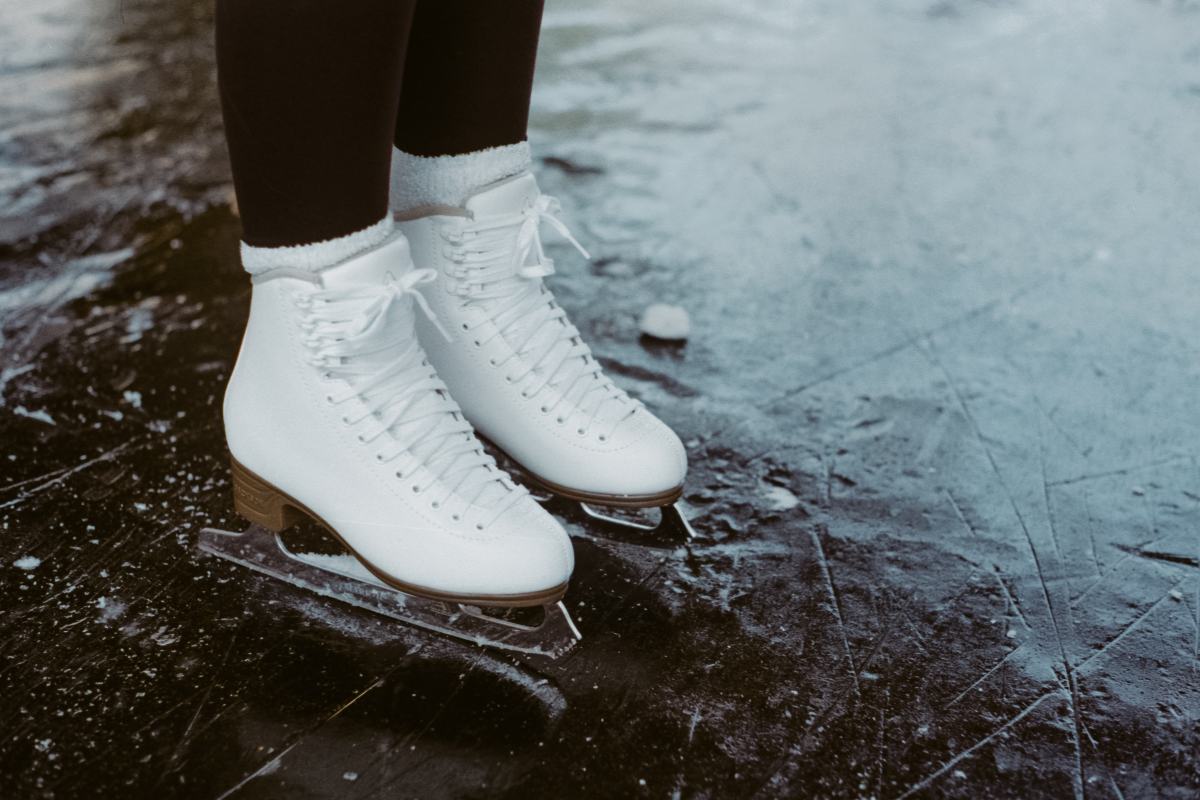
The movement of a figure skater across ice has been modelled in a new study by UAlberta mathematicians. Photo credit: Unsplash/Weston MacKinnon
A new mathematical model developed by University of Alberta scientists can describe the movement of a figure skater across the ice. The model uses nonholonomic mechanics, or mechanics with constraints, to uncover the mathematical mysteries of figure skating.
“We can describe the motion of the figure skater,” said Meghan Hall, PhD student. “If I want to make this movement or this pattern, what do I need to do with my body? What is the optimal way to do it? Or, if I’m not sure how to make a certain movement or pattern, this system will model the movement I need to make to produce it.”
Hall, a recreational figure skater who has been on the ice for 20 years, is conducting the research in collaboration with fellow graduate student Vaughn Gzenda under the supervision of Vakhtang Putkaradze, Centennial Professor in the Department of Mathematical and Statistical Sciences.
“We’ve developed a 3D model of how a body moves on ice,” said Putkaradze, who is currently working as the senior director of science and technology of ATCO’s Transformation Team. “It turns out that we can solve this problem by hand, which is incredible because equations in nonholonomic mechanics are very complex.”
In a recently submitted paper, the team developed a 3D model for describing the motion of a figure skater across the ice, as well as a library of the various movements and trajectories a skater can take.
“The fact that the equations of motion are integrable, or completely solvable, is most surprising,” said Gzenda. “Mechanical systems with nonholonomic constraints which are also integrable are exceedingly rare. There is a relatively short list of known examples. Our model is as far as we know, the newest on this list.”
Practical applications
For Hall, the research has many practical applications. “Figure skating inspired this research project, and now the project inspires me when I’m on the ice,” she said. “I’ve had a very different approach to skating throughout my career—probably because my head just thinks this way. Now we’ve built a simulation and I can see, on paper, how to shift my body.”
In addition to inspiration on the ice, the results from this research come with potential practical applications for skaters and trainers alike. “This would be a great way to understand how people train and could contribute to better figure skating training,” said Putkaradze.
It could also help skaters avoid common injuries, like spiral fractures in the lower leg. “This could potentially apply to blade or boot design,” added Hall. “Or even technique, to avoid these injuries. There are multiple ways of applying this research to the actual practice of figure skating.”
The first paper, “Integrability and Chaos in Figure Skating,” by Gzenda and Putkaradze, was published in the Journal of Nonlinear Sciences (doi: 10.1007/s00332-019-09593-w).